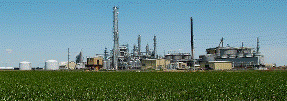Biological Systems Engineering, Department of
Document Type
Article
Date of this Version
9-2014
Citation
INL/EXT-14-33118
Idaho National Laboratory, Idaho Falls, Idaho 83415
http://www.inl.gov
Prepared for the U.S. Department of Energy Office of Nuclear Energy Under DOE Idaho Operations Office Contract DE-AC07-05ID14517
Abstract
Diesel use on farms in the United States has remained relatively constant since 1985, decreasing slightly in 2009, which may be attributed to price increases and the economic recession (Figure 1). During this time, the United States’ harvested area also has remained relatively constant at roughly 300 million acres. In 2010, farm diesel use was 5.4% of the total United States diesel use. Crops accounting for an estimated 65% of United States farm diesel use include corn, soybean, wheat, hay, and alfalfa, respectively, based on harvested crop area and a recent analysis of estimated fuel use by crop (Figure 2).1 Diesel use in these cropping systems primarily is from tillage, harvest, and various other operations (e.g., planting and spraying) (Figure 3). Diesel efficiency is markedly variable due to machinery types, conditions of operation (e.g., soil type and moisture), and operator variability. Farm diesel use per acre has slightly decreased in the last two decades (Figure 4) and diesel is now estimated to be less than 5% of farm costs per acre (Figure 5). This report will explore current trends in increasing diesel efficiency in the farm sector. The report combines a survey of industry representatives, a review of literature, and data analysis to identify nascent technologies for increasing diesel efficiency.
Included in
Bioresource and Agricultural Engineering Commons, Other Engineering Commons, Other Mechanical Engineering Commons, Transportation Engineering Commons


